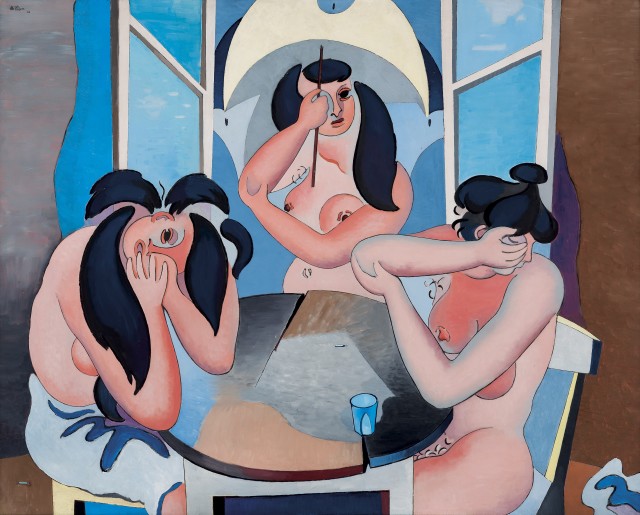The Malingue gallery reopens its doors after a six-month closure with a major exhibition (October 18-December 16, 2017) of the work of Jean Hélion from the 1940s. Twenty-five of the most important and representative works from this period will be shown, most of them from private collections. The Musée National d'Art Moderne/Centre Pompidou, the Musée d'Art Moderne de la Ville de Paris and the Centre National des Arts Plastiques have also agreed to take part in the project by lending major works.
In February 2017, the Malingue gallery initiated a complete renovation of its historic premises on Avenue Matignon. The gallery's inaugural exhibition is devoted to the painting of Jean Hélion (1904-1987) from the 1940s, an important period for his work. During that decade, after having structured his abstract forms in Figures around 1938-39, he developed a new realism based on certain motifs, among them men's heads (Émile, Édouard, Charles), smokers, young women, nudes and newspaper readers, and such obects as hats, umbrellas and carnations in his still lifes.
Hélion's decision to abandon abstraction in favor of figurative studies was met with incomprehension from his contemporaries, a fact which may have masked the influence his his approach had on other artists, especially Americans, who followed him. The works of some Pop Artists - Jim Dine, Richard Lindner, Tom Wesselmann, Roy Lichtenstein, etc. - echo the visual formulas developed by Hélion. On June 18, 1965, the English art critic Robert Melville wrote this in an article for New Statesman on the Jean Hélion exhibition at the Leicester Galleries: "[…] it will be obvious to everyone who visits the Leicester Galleries that Hélion is high in the forerunner class [of Pop Art]. He got very close to the spirit of Pop in some of the figurative works done before 1950 […]." These were artists who shared Hélion's desire to depict everyday life and the objects that "inhabit" the environment of his figures in the modern world.
While these questions must still be studied in-depth to clarify the links between Hélion and younger generations of artists, the gallery would like to contribute to an assessment of Hélion's role as a catalyst for the Pop movement. This involves taking a fresh look at his work, whose importance has been minimized and obscured for too long by research on Surrealist and abstract works of the same period.
A catalog containing all the works in the exhibition is published. The historian and art critic Philippe Dagen, author of an important monograph on the work of Jean Hélion, contributed a long preface analyzing this period, so crucial to the artist.
Continuing its policy of supporting the fight against cancer, the gallery will, as usual, donate the profits from catalog sales to the association Vaincre le Cancer, aiming the purchase of a device of crucial importance.
